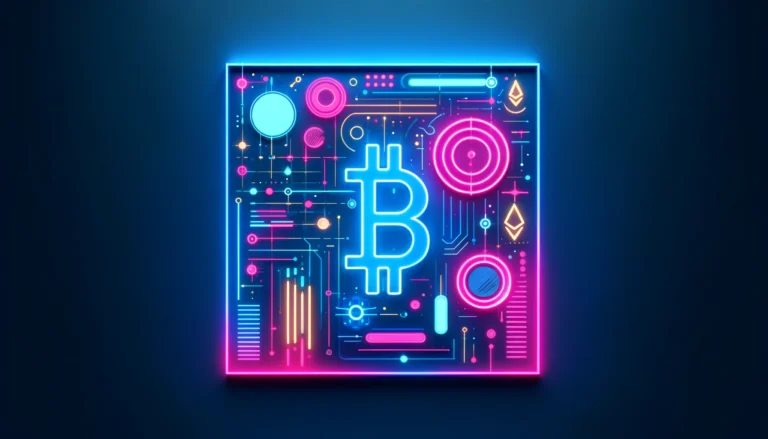Unlocking Potential: NFT Interoperability Explained
In the rapidly evolving digital asset landscape, Non-Fungible Tokens (NFTs) have emerged as a revolutionary method for representing unique ownership over digital and sometimes physical assets. Despite their growing popularity, the full potential of NFTs is yet to be unlocked, primarily due to the challenges associated with interoperability across different blockchain platforms. This article delves into the importance, challenges, and future of NFT interoperability, providing a clearer understanding of how this technology could transform the digital economy.
Understanding the Basics of NFTs
Non-Fungible Tokens, or NFTs, are blockchain-based digital assets that represent sole ownership and authenticity of a unique item or piece of content. Unlike cryptocurrencies like Bitcoin, each NFT is distinct and cannot be exchanged on a one-to-one basis, which adds to their uniqueness. The underlying technology of NFTs is primarily built on blockchain networks such as Ethereum, which ensures the security and immutability of the ownership records. NFTs have been applied in various sectors, including art, music, gaming, and real estate, fundamentally altering how we perceive ownership in the digital age.
Exploring the Need for NFT Interoperability
Interoperability refers to the ability of different blockchain ecosystems to share and recognize NFTs, allowing them to move seamlessly between various networks. The need for NFT interoperability stems from the growing demand for a more connected and fluid digital asset market. Without interoperability, NFTs remain siloed on their original blockchains, limiting their usability and potential applications. For instance, an NFT created on Ethereum cannot be used or traded on other blockchains like Binance Smart Chain or Flow, unless specific bridges are developed for cross-chain transactions.
The Challenges of NFT Interoperability
One of the primary challenges in achieving NFT interoperability is the lack of a standardized protocol across different blockchains. Each blockchain has its own unique set of rules and operations, making it difficult to establish a universal standard for NFTs. Additionally, issues such as security risks, scalability, and the complexity of integration pose significant hurdles. These challenges need to be addressed to ensure that NFTs can be used across various platforms without compromising on security and efficiency.
Current Technologies Enabling Interoperability
Several technologies and frameworks are being developed to facilitate NFT interoperability. Cross-chain bridges and sidechains are two prominent solutions that allow for the transfer of assets between different blockchains. For example, projects like Cosmos and Polkadot are working on creating blockchain networks that can interact with each other, thereby enabling the seamless exchange of NFTs. Moreover, standards like ERC-1155 have been proposed to allow for both fungible and non-fungible token operations, which could pave the way for more flexible interoperability solutions.
The Role of Blockchain in NFT Exchange
Blockchain technology plays a crucial role in enabling the secure and transparent exchange of NFTs. By leveraging the decentralized nature of blockchains, NFT transactions are immutable and traceable, which significantly reduces the risk of fraud. Furthermore, smart contracts automate the processes involved in the exchange, ensuring that all conditions are met before a transaction is completed. This level of automation and security is essential for developing trust in NFT markets and furthering their adoption.
Potential Benefits of NFT Interoperability
Enhanced interoperability of NFTs could lead to numerous benefits including increased market liquidity, broader accessibility, and enhanced functionality of NFTs across different applications. For creators and collectors, interoperability could mean a wider audience and more platforms for buying, selling, or trading NFTs. For businesses, it could facilitate new forms of partnerships and revenue models, such as cross-platform gaming or collaborative digital art projects. Moreover, interoperability can drive innovation in other tech sectors by enabling new ways to merge physical and digital worlds.
The future of NFTs is likely to be heavily influenced by advancements in interoperability. As the technology matures, we can anticipate more robust frameworks and standards that will facilitate seamless interaction between various blockchain ecosystems. This evolution will likely spur the growth of a truly global digital asset market, with NFTs at the forefront of this transformation. Additionally, as regulatory and technological landscapes continue to develop, the integration of NFTs into mainstream financial and creative industries seems imminent, promising an exciting new chapter for digital ownership and commerce.
As the digital world continues to expand, the importance of NFT interoperability becomes increasingly evident. Overcoming the current challenges and leveraging emerging technologies will be key to unlocking the full potential of NFTties. By enabling seamless exchanges across diverse platforms, interoperability not only enhances the utility and value of NFTs but also fosters a more inclusive and innovative digital ecosystem. The journey towards a fully interoperable future is complex but holds the promise of reshaping the digital asset landscape in profound ways.

